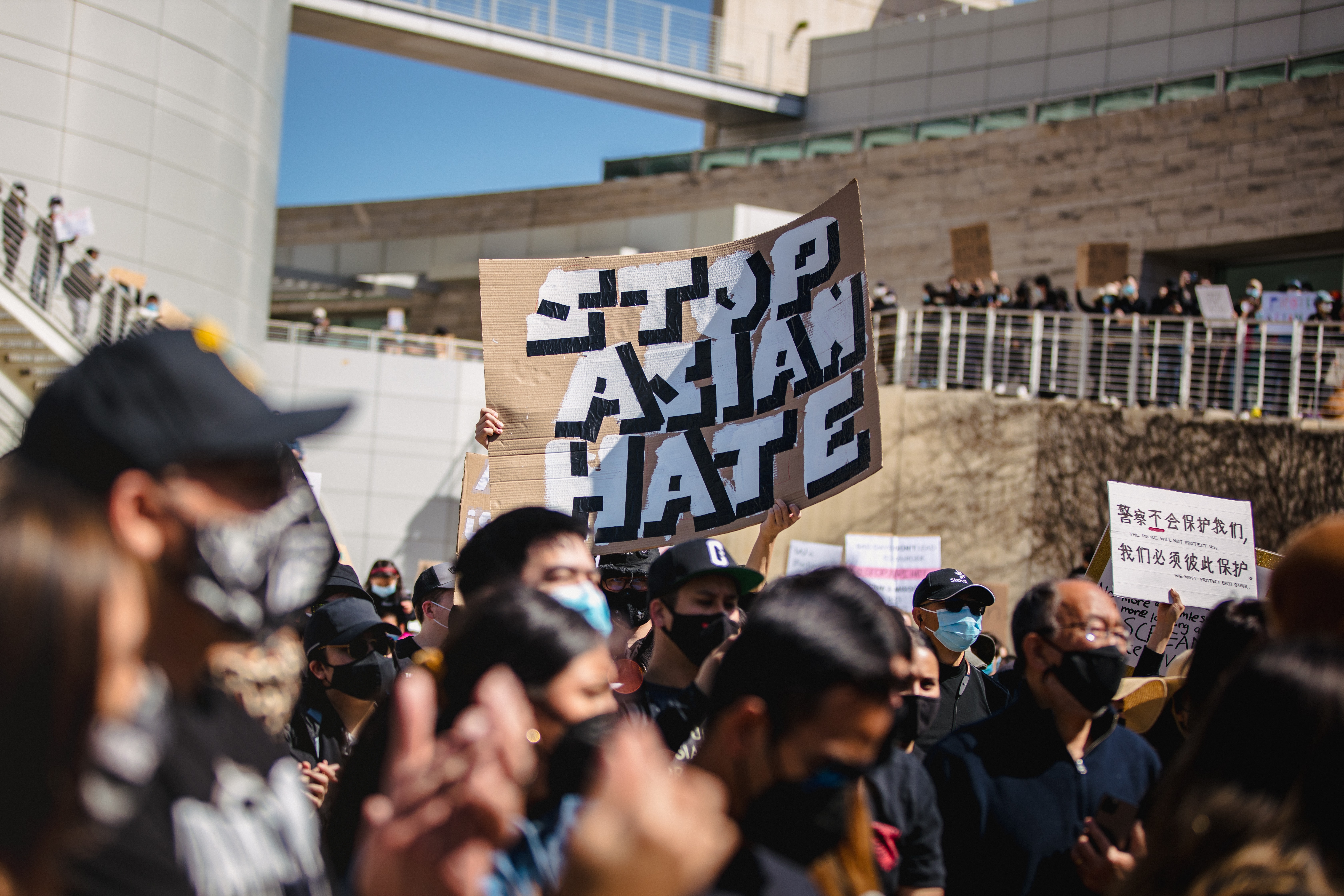For more than a year, the negative rhetoric against China as the source of the COVID-19 virus has resulted in increased verbal and physical attacks against the Asian American and Pacific Islander (AAPI) community. As the world learned to navigate the pandemic, hate crimes against Asian Americans increased as the virus spread. While activists and allies have ramped up their efforts to fight the hate, one of the immediate calls for action was to end the use of racist terminology in media that continues to fuel dangerous consequences in real life.
The harmful effects of this language (e.g. “China virus,” “Wuhan plague”) are widespread, as a new analysis from Nielsen highlights that Asian stereotypes, conspiracies over the origins of COVID-19, and offensive terminology against Asian Americans are thriving in digital content. While media has a clear role to play in disrupting anti-Asian racism, so too do brands. As a result of the digital ad serving process, brands are unintentionally funding hate speech. Without insight into where their ads are appearing, brands can easily become associated with offensive content and keywords. In an increasingly digital media landscape, brands need to protect themselves and stop inadvertently monetizing content that puts AAPI communities at risk.
ARE MAJOR BRANDS FUNDING HATE SPEECH ONLINE?
Amid the increase in harmful narratives, advertising has largely remained business as usual. To better understand how prevalent brand exposure to hate speech is, Nielsen conducted a study leveraging artificial intelligence to identify more than 1,200 website URLs containing hate speech against people of Asian descent. Once we isolated the offensive content, we identified thousands of ad occurrences.
Source: AdVerif.AI, 01/01/2020-04/01/2021
From there, we identified more than 250 impacted ad campaigns in the first quarter of this year alone. These campaigns ran on URLs where brands, including household names, were adjacent to content that featured the use of racist, disparaging, stigmatizing, and xenophobic terminology and conspiracies related to coronavirus origins, Asians and China.
Which ad categories funded hate speEch?
Source: Nielsen Digital Ad Intel, Q1 2021, Digital Display and Digital Video ad spend by select categories on websites with at least one detected instance of anti-Asian hate speech.

A SNAPSHOT OF AD-SUPPORTED ANTI-ASIAN HATE SPEECH IN DIGITAL CONTENT
From news reporting to op-eds, the terms and subjective language connecting blame for the novel coronavirus to Chinese and Asian people has stained media coverage on-screen and online.
It’s getting better, right?
Despite the impact of this terminology being used, this content still shows up on some of today’s most visited news and information websites. And brands remain exposed as a result.
Source: Nielsen Digital Content Ratings, Q1 2021 Unique Audience, Computer Only; Nielsen Digital Ad Intel, Q1 2021
In the first quarter of 2021, ad campaigns from a dozen Fortune 500 companies and at least 66 brands were found adjacent to content including anti-Asian hate speech.
WHO FUNDED ASIAN HATE SPEECH THIS YEAR?
Source: Nielsen Digital Ad Ratings, Q1 2021
Our analysis of identified hate speech in the first quarter of 2021 found that the use of this language actually increased in March from January and February, given the anniversary of most of the U.S. lockdowns in March 2020.
Read as: 98 site urls were identified in March 2021 that used anti-Asian hate speech.
Read as: 42 site urls were identified in Q1 2021 that promoted the “China lab” conspiracy in their coronavirus coverage.Source: AdVerif.AI
Looking deeper, the more frequent terms center on blame, distrust and malice towards China, their people and their government. Nearly one-third of the hate speech in March 2021 came from just one site, which collected more than $100,000 in digital ad spend from three top advertising categories.
Source: Nielsen Digital Ad Intel, Q1 2021, Digital Display and Digital Video ad spend across websites with at least one detected instance of anti-Asian hate speech.

THE NEED FOR LESS HATE AND MORE HOPE
As the Senate approved the anti-Asian hate crimes bill with bipartisan support, this signal of unity brings some hope that legislators will do their part to prevent further violence against Asian Americans. While the Center for the Study of Hate and Extremism estimates anti-Asian hate crimes have increased 150% over the past year, ad spend in digital content with hate speech declined overall in first-quarter 2021. There is hope that further awareness will prevent the advertising industry from monetizing content that fuels hate.
AN OPPORTUNITY FOR ACTION
What Brands Can Do Right Now
U.S. consumers across the country are standing up and demanding accountability from government and business to take action. It’s not just a matter of corporate social responsibility, it’s a matter of brand safety. For advertisers, brand safety is about more than a stagnant list of terms. Brands and their advertising partners should be in constant review as language emerges that is harmful to a community—and to their brand. And ad servers must consider how changes in rhetoric can be reflected in their algorithms. It’s time to rethink how and where ad campaigns are showing up, ask for accountability from digital ad placement partners, and build protective barriers to prevent placing ads in content with hate speech.
Methodology
Nielsen Digital Content Ratings
Nielsen Digital Content Ratings (DCR) custom desktop reach analysis of top news domains provided to AdVerif.AI to be flagged as publishing content that included anti-Asian hate speech in 1/1/2021-3/31/2021.
Nielsen Digital Ad Ratings
Nielsen Digital Ad Ratings (DAR) custom analysis of advertisers that ran desktop impressions on URLs that included hate speech during 1/1/2021-3/31/2021.
Nielsen Ad Intel
Nielsen Ad Intel custom analysis reviewed National Digital Display and National Digital Video advertising spend within 1/1/2021-3/31/2021 on the sites identified for using anti-Asian hate speech.
AdVeRIF.Ai
AdVerif.AI is an artificial intelligence company providing ad verification solutions for advertisers, publishers as well as ad platforms and backed by the Nielsen Innovate Fund. Using Natural Language Processing (NLP) and machine learning the proprietary AdVerif.AI technology is able to train a model that can identify content featuring anti-Asian terms related to COVID-19. The collaboration with AdVerif.AI allowed for training an algorithm to distinguish from content reporting on the issue of hate speech vs. propagating messages of hate, conspiracy or stigma. The resulting model was then used to evaluate the Top 300 news, information, and news aggregation sites based on Digital Content Ratings monthly unique audience for January 2021. Each page on those sites was then evaluated on the likelihood that it contains hate speech, returning a list of top “offending pages” by assigning a score based on presence of hate speech, subjective language, false information, etc. Each page is further evaluated by the model to identify the advertiser(s) and ad platform serving the ads providing a point-in-time view of ads placed in offending content based on a US IP address.



